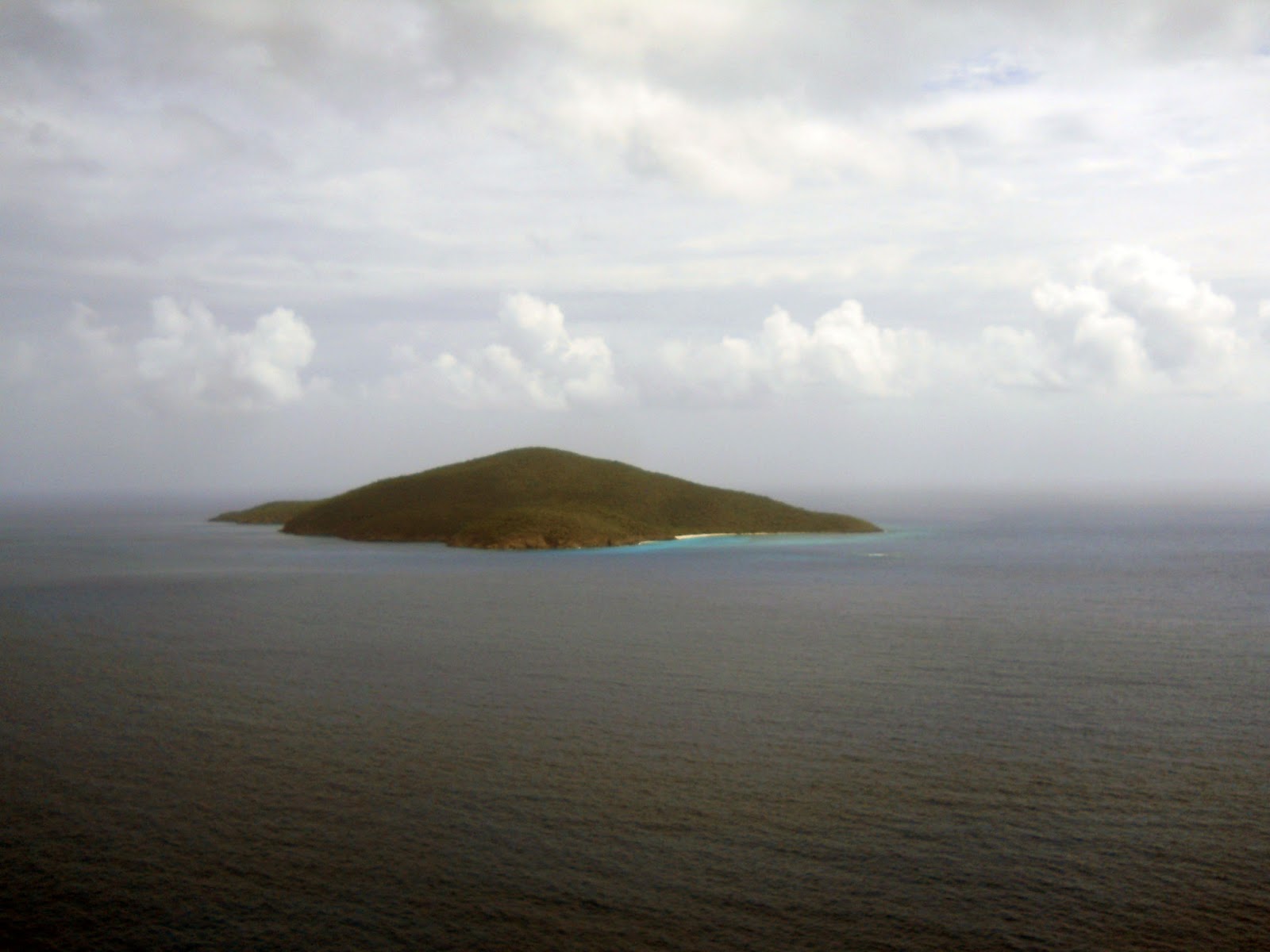Well, I've been on island for a couple days, and am starting to get into a solid new running/training schedule. I've been calling this residential fellowship a "running camp" because I would never do the type of running one does here on the island if I was still in Colorado. Here, the primary focus will be on speed, with hills and endurance thrown in to the mix, whereas if I was still in Colorado I would simply put all of my focus towards the mountains as I usually do. This, I've learned, is great for running peaks, but not the smartest training for racing. So my fellowship, beyond the scientific research I'll be involved in, is to some extent a forced focus on speed. Now, I need to give a disclaimer to that, as I already did one session that involved 1,200 of gain in 8 miles. However, early morning speed work will still be the primary emphasis.
As such, I got up early this morning and went down to Magens Bay to run the "track". This is perhaps one of the most idyllic "tracks" in the world. The loop is a .57 miles around, shaded, and has either paved or grass/sand options. Plus, it is 25 feet from one of the most beautiful beaches in the Caribbean! In the early mornings, this is a big exercise zone for the locals. Along with myself, there was a small yoga class going on, some other kind of workout/gym class, and lots and lots of people walking laps back and forth on Magens. With wild mongooses hunting on the edges, morning doves and other birds singing, and a soft tropical rain coming down, I got to business. Or, business for me, as I attempted my first speed workout ever. After a couple laps to warm up, I did eight laps of tempo down and sprint/fast back. Since the loop is just over 800 meters, I was basically doing 500s or something. After I did a couple more laps to cool down, I then dipped into the ocean and did another 30 minutes of water running, which is really tiring. Plus, I got to see a reef shark! So, around 11 miles for the morning.
I'll have to work on getting my times down and precise, so that I can start to work on slowly taking seconds off, but for a first attempt, I was really pleased. In a week or so I should know my baseline times and what I have to work towards to lower them. It will be really interesting to see how this speed work impacts my times and running once back home in Colorado and at altitude. My baseline training times for a couple of the local runs are:
- Outer Loop of Apex - Car/Apex/Enchanted Forest/Top/Apex/Hardscrabble/Grubstake/Argos/Car - 1:12 (1,900' gain)
- Mt. Falcon - Car/Castle/Turkey/Castle/Meadow/Tower/Meadow/Castle/Turkey/Castle/Car - 1:23 (2,010' gain)
- White Ranch Outer Loop - Car/Belcher/Whippletree/Longhorn/Rawhide/Belcher/Mustang/Belcher/Car - 2:14 (3,424' gain)
- South Boulder-Bear Loop - Car/Shanahan/Mesa/Shadow/South Boulder/Bear/Fern/Shanahan/Car - 1:43 (3,704' gain)
There are others, but these are some of the one's I run regularly and have solid baseline times on. I've gone faster (and slower), but these are my averages for this spring. I'm hoping that the speed work will allow me to lower these times a bit, once I re-acclimate in the fall.
Looking out at the Peterborg Peninsula - there is a run that gets you 1,200' of gain and 8 miles heading out and back on this
The Magen's track - perfect running surface with the beach on the left
This is the other side of the "track" loop
Jump into Magen's for a cool off and some water running









